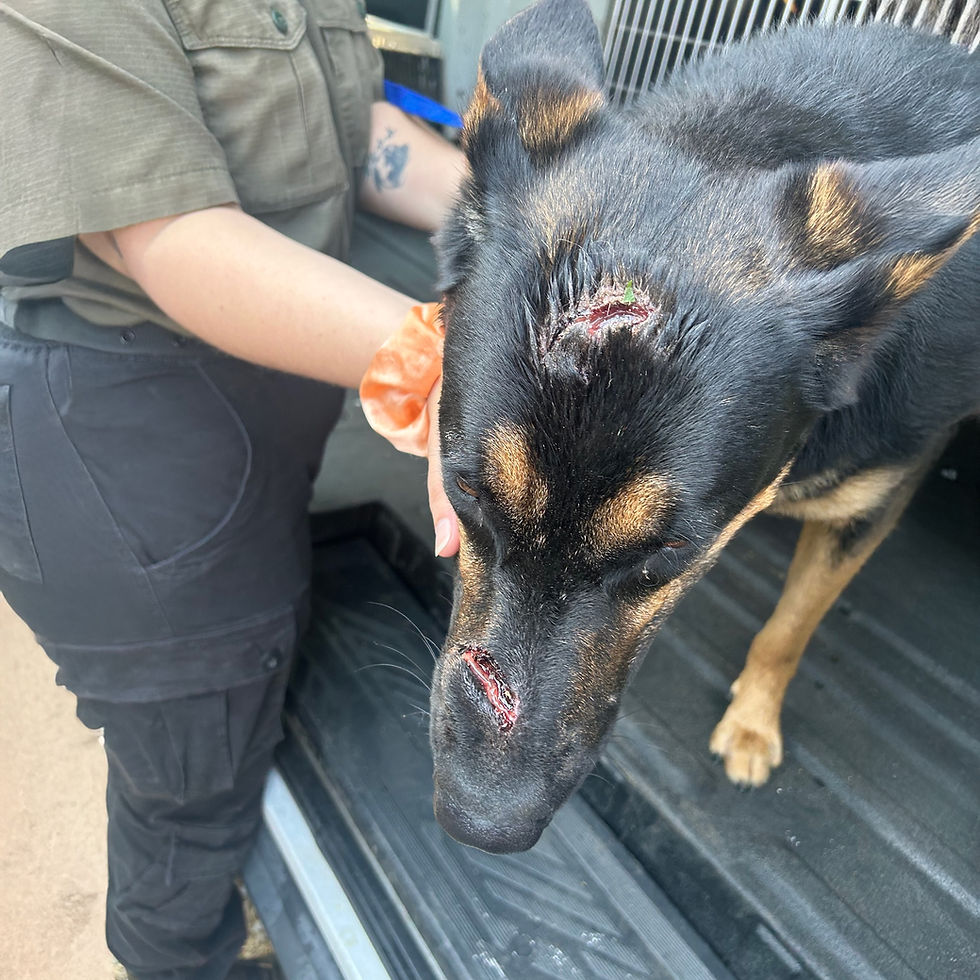Keeping your pets safe from foxtails
- aransom48
- Jun 25, 2020
- 2 min read
Updated: Oct 15, 2024

Foxtails are a common issue for North State pets, often times working their way into noses, ears, eyes, mouths, and even into patches of skin.
According to Haven Humane Society’s Chief Medical Officer, Dr. Cyanna Howden, the danger of foxtails goes beyond simple irritation due to the fact that the tough seeds do not break down inside the animal’s body, which can lead to serious infection.
“Foxtails are a major medical concern in Northern California as we have many dry months where they are easily accessible to our pets. Only with routine checks by owners can they be caught early and ensure that migration into the lungs and abdomen does not occur,” said Dr. Howden.
So what are the signs that your pet has a foxtail that is causing problems?
Never moving backwards, foxtails can move within your pet’s body, sometimes making their way to the brain or lungs. Embedded foxtails can cause many symptoms including discharge, abscesses, swelling, pain, and even death.
If your pet shows any of these symptoms, you should check them for foxtails or contact your veterinarian. Your pet’s feet, ears, eyes, nose, and genitals are the most common areas where foxtails will be found.
Feet: Foxtails can easily become embedded between your pet’s toes and will cause noticeable swelling or limping.
Ears: If your pet is shaking its head, tilting it to the side, or scratching it repeatedly, this could be a sign that there is a foxtail in its ear. Sometimes foxtails can make their way so deep inside the ear canal that your veterinarian will need to use a special scope in order to see it.
Eyes: Signs that a foxtail may be in your pet’s eyes include redness, discharge, swelling, squinting, and pawing. If you believe your pet may have a foxtail in its eye, you should seek veterinary care immediately.
Nose: If your pet is experiencing discharge from the nose or if they are sneezing frequently and intensely, there may be a foxtail lodged in a nasal passage.
Genitals: If you notice your pet persistently licking at its genitals, foxtails could be the cause.
To help prevent issues, you should make a habit of examining your animal for foxtails, specifically from May through December, especially if you’ve been walking in areas where foxtails are growing.
The best way to prevent your pet from getting foxtails is to avoid overgrown, grassy areas and you should pull out any foxtail plants you find in your yard. You can also trim your pet’s hair during foxtail season to make it easier to spot them on your pet.
Remember, if a foxtail is embedded in your pet, it will never disappear. This is why catching them early and seeking immediate veterinary care is important.



